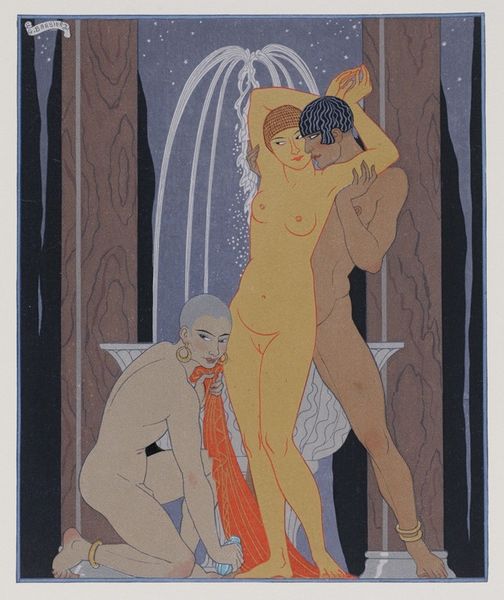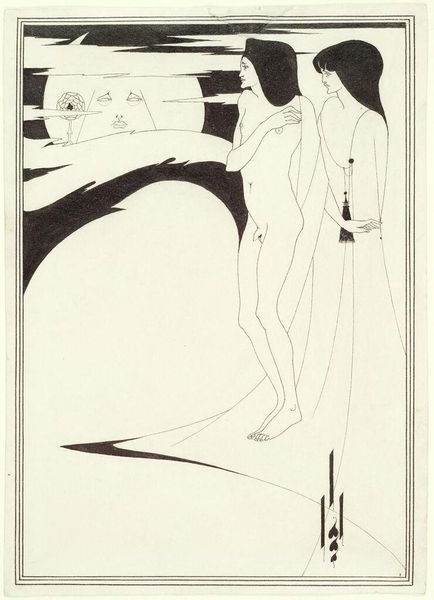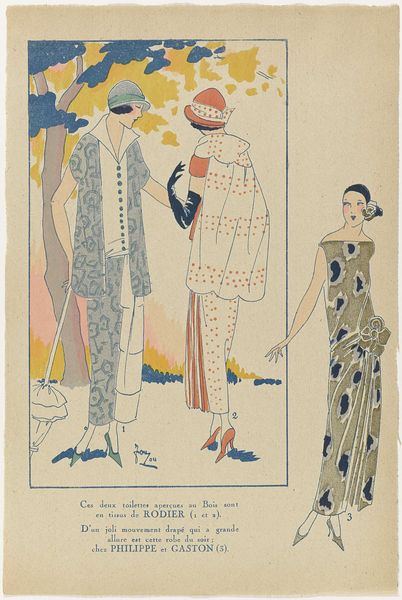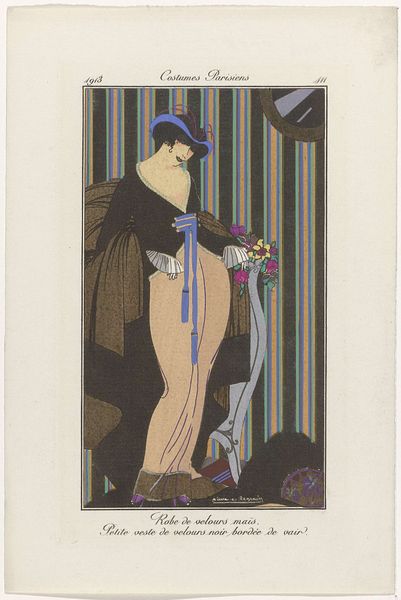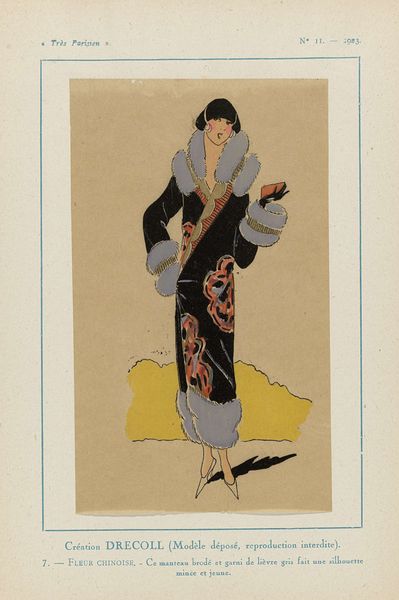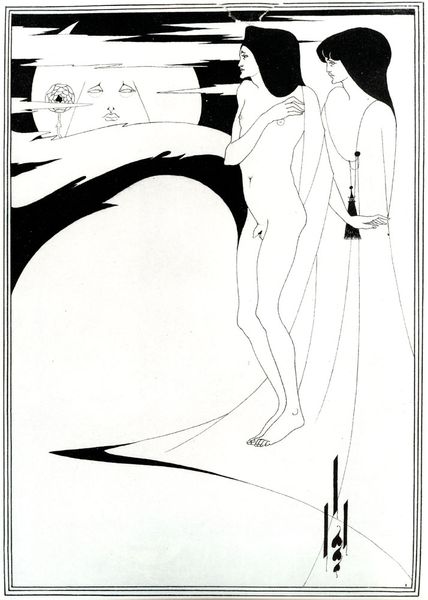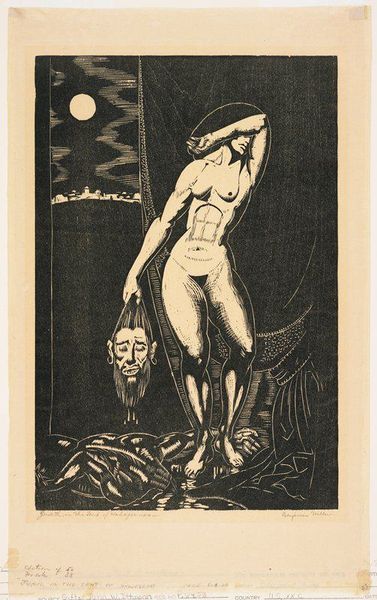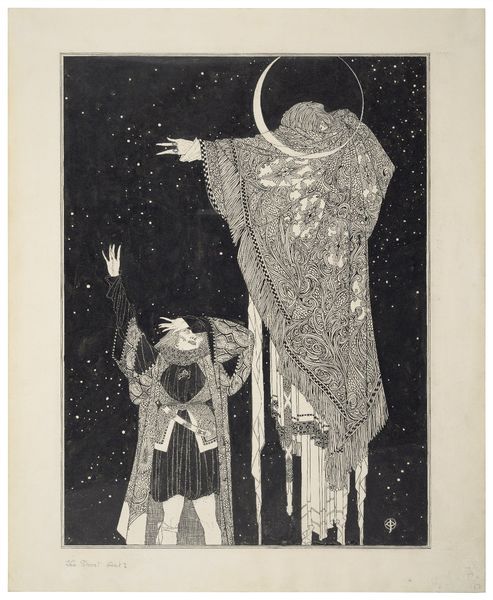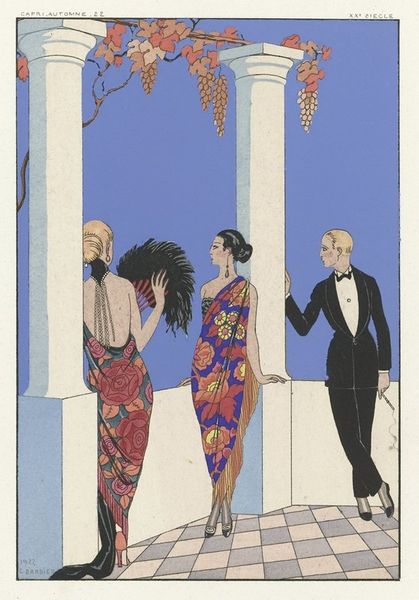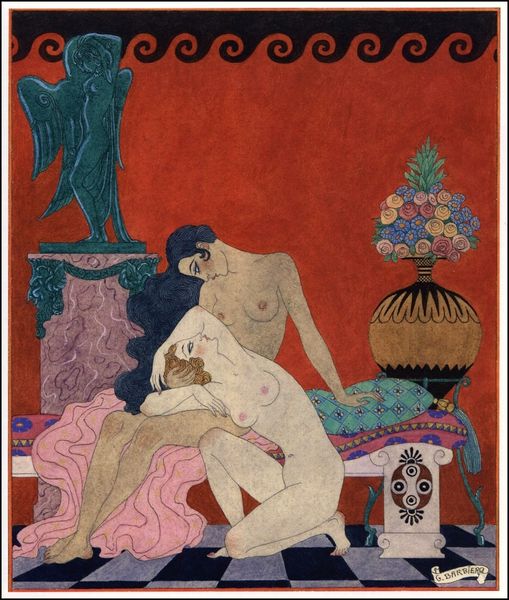
drawing, print
#
art-deco
#
drawing
#
pastel soft colours
# print
#
traditional media
#
landscape
#
figuration
#
feminine colour palette
#
flat colour
#
soft colour palette
#
erotic-art
Copyright: Public Domain: Artvee
Editor: This is "Le Soir," or "The Evening," by George Barbier, likely created between 1922 and 1926. It looks like a print, maybe pastel? It has a very glamorous feel, but the flatness also makes it feel like a product of mass culture... almost like an advertisement. What stands out to you in this work? Curator: What I find fascinating is the deliberate juxtaposition of materials and imagery that speaks to the social and economic shifts of the Art Deco period. Look at the composition: We see fine materials alongside... the *overtly* ritualistic and reproductive subject of this fertility idol from –I presume, inaccurately!– Africa. What is Barbier saying with this deployment? Editor: Well, the idol, if viewed in its original purpose, would be the antithesis of desire divorced from creation? Is he creating a material tension between authentic culture and mass consumer desire? Curator: Precisely. Consider, too, the printing process itself. Printmaking allowed for wider dissemination of imagery, which democratized access, in a way, but also commercialized desire itself. Do you notice a contradiction between how Barbier portrays gender through form, line and design with the fetish object? Editor: I think I am missing what you mean. Curator: He objectifies this European female figure; flattening her. Compare her to the sculpted African male figure whose creation required skilled artisanry, an embodied understanding of form, volume, and intention, so she is rendered with more commercial intention. How does the production of desire get manufactured and expressed with labor, materiality, and consumption as the intention? Editor: I never thought about how the materials themselves and their means of production could carry so much cultural weight. That’s fascinating. I assumed it was a beautiful but superficial object, and it never occurred to me to connect its imagery with it commercial construction. Curator: Indeed. This pushes us to ask; how does the act of artistic creation get caught up in power relations and commodity fetishism?
Comments
No comments
Be the first to comment and join the conversation on the ultimate creative platform.
